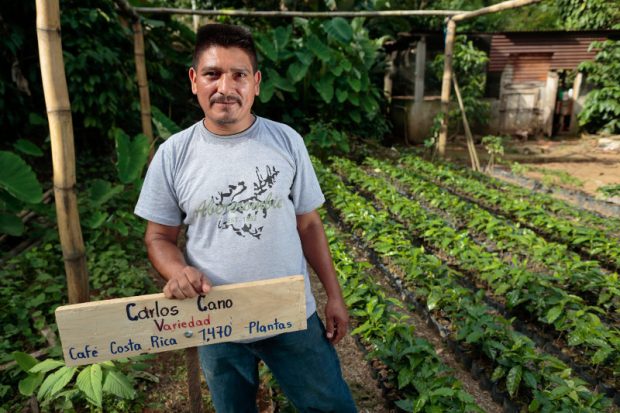A few months ago, in the offices of Anacafé in Guatemala City, the II Cumbre de la Roya was held, two years after the initial meeting. The objective of the meeting was to take stock of what has happened since the first meeting and to see how the Central American coffee sector was recovering from the last outbreak of coffee leaf rust, or roya.
The good news is that there are signs of slow recovery in Central America. We know that in order to be prepared against the next outbreak, we need institutional alignment, early warning systems for producers, greater availability of rust-resistant varieties and increased technical support.
However, the bottom line is that solutions for recovery are slow and they don’t come cheaply. Root Capital recently released a learning report on Financing Farm Renovation and in the first pages, they cite an estimate for the global need for renovation and rehabilitation in coffee for 5 million hectares that will cost about $41 billion. This is a staggering sum. Yet on first glance, our initial reaction is that this is framed as an external investment into the farm and farmers.
At CRS we have been working on ways to create resilient farm families who can save and invest in their own farm. It starts with our approach to microfinance, called SILC (Savings and Internal Lending Communities). Before we get there, let’s review the need for investment and how the concept of resilience goes beyond characteristics on the farm.
A farm devastated by roya needs investment from the farmer to recover. It needs capital — financial capital to pay for renovation, human capital to improve the management of the farm, and social to access the support networks, extension services.
It is perhaps one of the most sadistic truths of agriculture: The moments of crisis when a farmer needs to invest in his farm are the times that he or she is least able to do so. A coffee farm that has its production slashed by roya provides no extra income for the farmer that allows him or her to re-invest into his farm’s productivity. This is not only for the year of the outbreak, but the incurred costs and the loss of profit follow the farmers for two to three years after the outbreak.
This is not the first disease epidemic that has laid coffee farmers out, nor will it be the last. In parts of Africa, farmers are battling another fungal disease — coffee berry disease — that to date has not spread to Latin America. We haven’t even considered the role of climate change and its potential to spread these diseases by creating more favorable conditions.
As we rebuild farms and replant coffee trees, we have an eye to the uncertain future. To prepare for this uncertainty we are trying to make farms and farm families more resilient to the shocks that come from weather or the market. How do we make a farm and a farm family more resilient?
A deeper dive into what we understand about what creates resilience for smallholders will have to wait for another post. However, we know that in order for farmers to adapt, absorb or to transform in response to shocks and changes, they need more than just diverse sources of income and good farming practices. They need access to capital — both financial and social. Yes, social capital. Social capital refers to the collective value of social networks (beyond Facebook) and the benefit or good that people in these networks do for each other.
I’ve talked about this before. In Western Guatemala, in our Café Verde project, we have been promoting savings and financial literacy through a hybrid model of SILC in conjunction with coffee farm management plans. We are seeing some fantastic results.
The first result is the newly found ability of the participants to invest in their own farms and their own renovation. During the first year of the project, CRS assisted farmers in the renovation of 150 hectares of coffee in San Marcos. In the second year, the participants (small farmers who average 1 ha of coffee) renovated 114 hectares, investing their own savings from the SILC groups that they had formed. For every dollar that CRS invested in renovation, the participants matched it with 80 cents of their own savings. Using this community financed renovation model, participating farmers will be able to renovate their 1 hectare plot of coffee over a period of 4 years using their own savings without the need of taking on additional debt in an uncertain market. After two years, they are already halfway there.
The second result is harder to measure. Michael Sheridan (of CRS) made mention of this in this comment on a previous post of mine on SILC. It is the social and human capital that we are currently building that will provide benefits in the long term. In Nariño, Colombia, these SILC groups have evolved into marketing groups — farmer associations who process and sell coffee together.
One of the recent efforts to quantify and create an index for resilience is led by the FAO. They define resilience as a function of 10 different variables. Among these are non-agricultural assets and social safety nets. These are key components of resilience, allowing for the empowerment of the farmers, who are investing their own money into renovation.
(note: this piece was co-written by Daniel McQuillan)
Kraig Kraft
Kraig Kraft is the CRS Technical Advisor for Coffee and Cacao for the Latin America/Caribbean. He is Based in Managua.







Comment